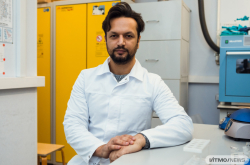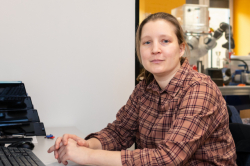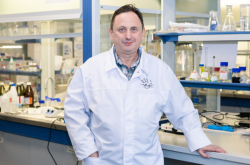How did you hear about the ITMO Fellowship program?
Tamer Abdelrazik, my colleague from the City of Scientific Research and Technological Applications (SRTA-City), told me about the program. He spent a year developing polymer hydrogel membranes based on antimicrobial and antioxidant proteins for wound dressing applications in collaboration with researchers from ITMO’s Infochemistry Scientific Center. He recommended the university as a good place for a researcher. So, I decided to take part in the Micro Fellowship track, as it was the easiest to fit into my busy schedule with all of the projects I am currently working on.
All applicants to the ITMO Fellowship program have to meet specific requirements in terms of their work experience, qualifications, and publications in high-ranking journals. What do you think helped you get into the program? What would you recommend to future applicants?
Yes, I think it all comes down to our CV. We are all working to present ourselves in the best way, and the CV demonstrates our knowledge, skills, experience, the topics we are interested in, are working on or are planning to venture into. Also, my experience in such a scholarship topic supports my application, as I have many publications in this field in high-ranked journals. For example, before doing a fellowship at ITMO, I took part in a similar three-month-long program in Slovakia. Initially, I described only one project related to green energy in my proposal, but we ended up working on more projects in three months. It’s important to describe all of these points in your application, because they will be considered when the university's scientific committee decides whether you have enough qualifications to be accepted into the program.
In my opinion, it’s important to focus on the field that you are planning to collaborate in, you should have good experience to be trusted and qualified. For example, I am interested in alternative energy sources and wastewater treatment, so before applying for any program I should check carefully that the university I'm applying to conducts research in this field and will be able to improve my skills and experience in this point.
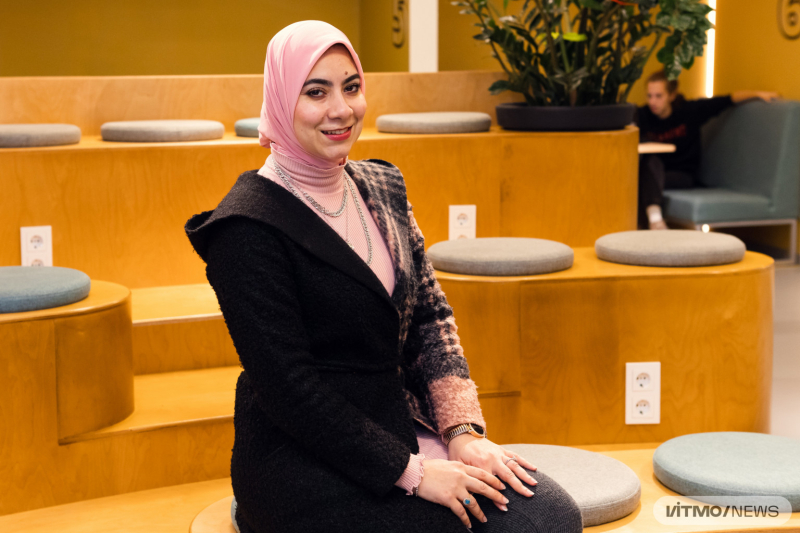
Randa Ghonim. Photo by Dmitry Grigoryev / ITMO.NEWS
At ITMO, you did research at the International Scientific and Research Institute of Bioengineering. What was your project about?
My project is related to industrial waste and water treatment. As we know, there are many ways to transport crude oil, such as underwater pipelines and oil tankers, but accidents occur during such transfer and oil ends up released into the water. Because of the differences in the density between oil and water, oil doesn’t sink but floats on the surface. This prevents sunlight from reaching marine flora and fauna, leading to its death and deterioration.
There are several approaches to cleaning up oil spills, including mechanical, chemical, physicochemical, biological, and others. We believe that it’s important to use simplified green methods to solve this problem. So we suggest using agricultural waste material, such as rice straw, waste paper, and tree leaves, to treat oil spills. There are several advantages to such materials. First of all, it is cheap. Countries all over the world produce massive amounts of agricultural waste which is considered a particular type of pollution and requires additional costs and treatment.
Second, unlike synthetic materials used to reduce pollution, natural waste is biodegradable, meaning that it doesn’t leave any additional waste behind. Finally, by turning agricultural waste into a useful material, we will create a full circle – one type of waste will help reduce another. This way, we will clean oil spills and slow down climate change.
How can we use rice straw to treat oil spills?
We don’t suggest using the materials as they are, as that wouldn’t be efficient, but a simple modification can enhance their efficiency. Instead, the materials can be selective, “smart,” so that they absorb only oil and not water. We can make this material acquire different forms, such as sponges or grains, but in our project we used rice straw as-is. We proved the efficiency of our suggestion via computer analysis. The technology we propose works as follows: we place the modified rice straw on an oil-water mixture, it absorbs the oil, and then we take it out – notably, any absorbed water will drain away and return to its source. It’s not unlike when you use a colander while making pasta in your kitchen.
Currently, we have submitted our article for publication, and now we are planning to conduct several experiments using small amounts of green adsorbents. If they prove successful, we will scale up this experiment with different straw modifications that might affect the efficiency of oil adsorption.
Read also:
ITMO Fellow Tamer Abdelrazik on Novel Antimicrobial Polymers
ITMO Fellowship Stories: Daniel Sapori on His Decision to Pursue Science in Russia
ITMO Students Shine At Hackathon Oil Tech Challenge 2021 and Enter Ministry of Energy Candidate Pool
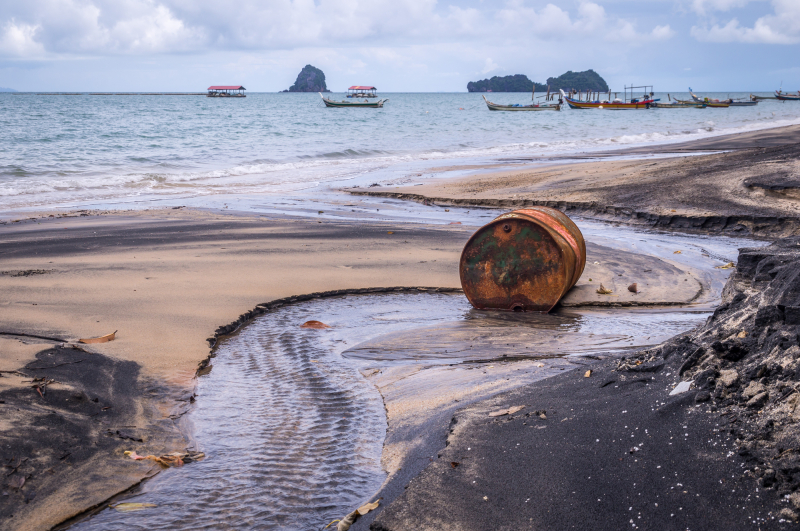
Credit: photogenica.ru
For over a month, you held a series of open lectures for ITMO students and everyone interested. What were your talks about and why did you choose the open format?
Yes, it was an amazing experience I enjoyed. One of the lectures was about alternative energy sources. I believe that instead of witnessing the gradual depletion of oil deposits as we rely on oil as our main energy source, we should look for other sources of energy. For instance, we could make use of compounds that can be produced from natural sources: such as hydrogen, ethanol, methanol, or biodiesel. They could be used as fuel without causing more pollution.
I find open talks to be a great format because there are people who are already familiar with the topics. For instance, one of the talks was about proton-conductive membranes for fuel cells – it attracted several Master’s students who were working on similar topics for their theses, as well as an industry representative with a lot of experience in the field. We had a long conversation and even ended up exchanging contact details, so I hope we collaborate in the future.
Did you have any difficulties communicating with Russian students?
Language was a big challenge, of course. I had to find simpler ways to talk about any subject, be that science or some daily life issue. In three of our lectures, too, I had to choose mywords to account for the students’ varying levels of English. For instance, the presentation included both scientific descriptions and more simplified ones, as well as images to help illustrate the point. I also tried to organize some form of a discussion during my talks: I would ask students to explain something the way they understand it. I think it helped us understand each other better. But overall, I think it was joyful for all of us to contact each other in an unusual way.
How did you enjoy St. Petersburg? Our weather doesn’t get the best reviews.
I like rain and snow. I was really happy when I woke up and saw snow everywhere. I hope it snows more so that I can make a snowman before I return to Egypt.
My first impression of the city was beauty – its fresh air and clean streets, its historical buildings with interesting designs and details. As someone with a background in engineering, I pay attention to small details and admire them. I come from Egypt, where we are surrounded with creations from an ancient civilization, and here I came to appreciate a different design, a different kind of art and architecture. In Moscow, I was impressed by the Kremlin – I kept asking myself if people actually lived there. In St. Petersburg, I really liked the Hermitage, and the Alexander and Catherine Palaces in Tsarskoye Selo. I would actually love to live in the Alexander Palace, near its grand park.
Are you planning to return to St. Petersburg?
Yes, I hope to return to ITMO again, and I am already taking steps towards it. We are now working on a project that, if approved, will be included in the next year’s curriculum.



